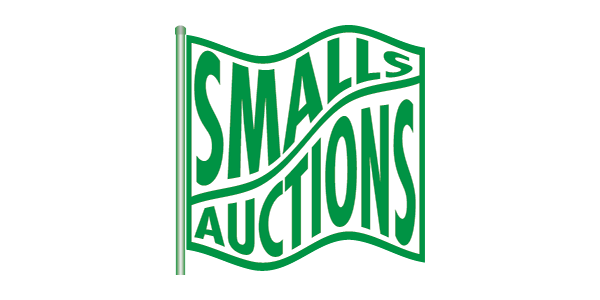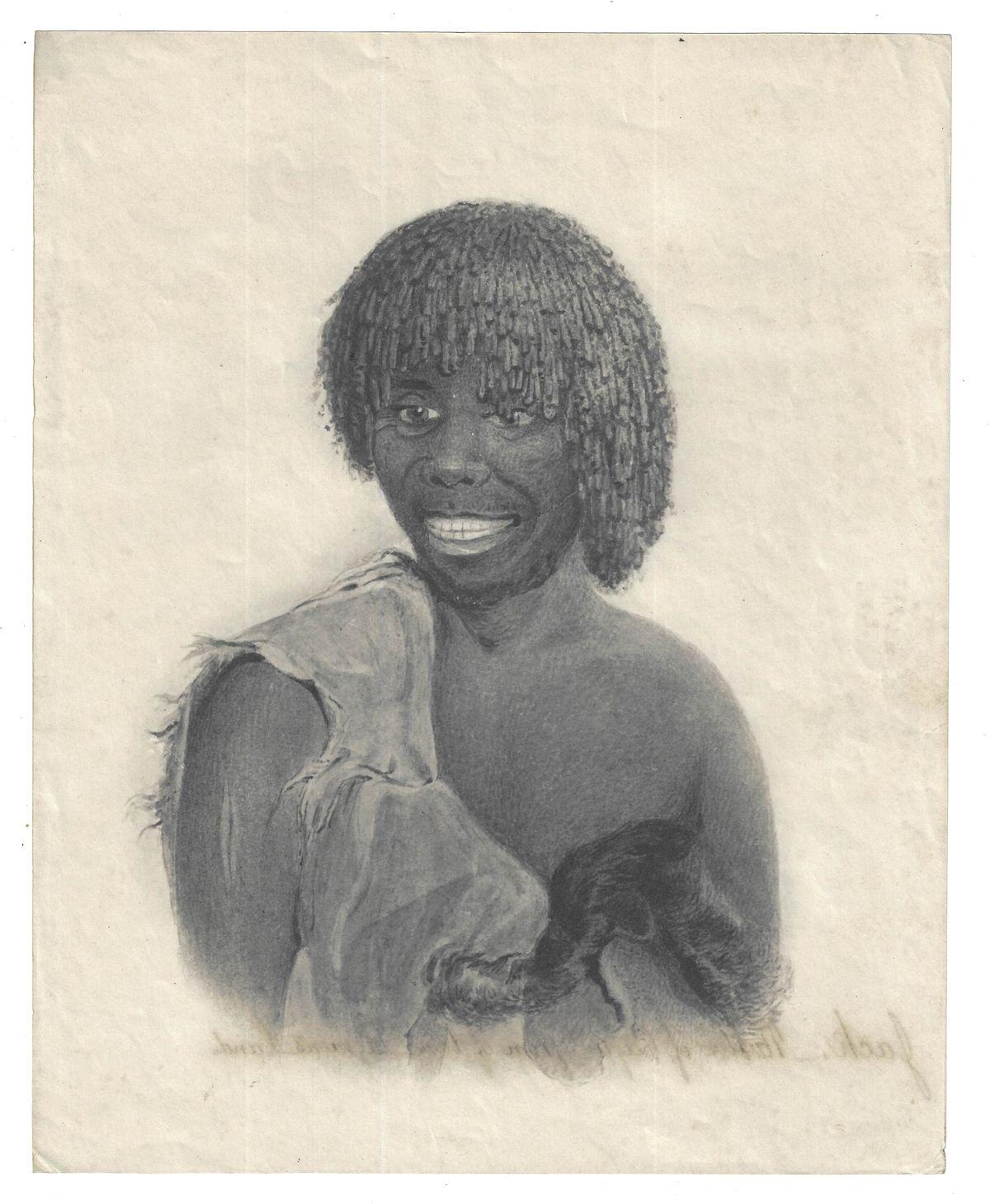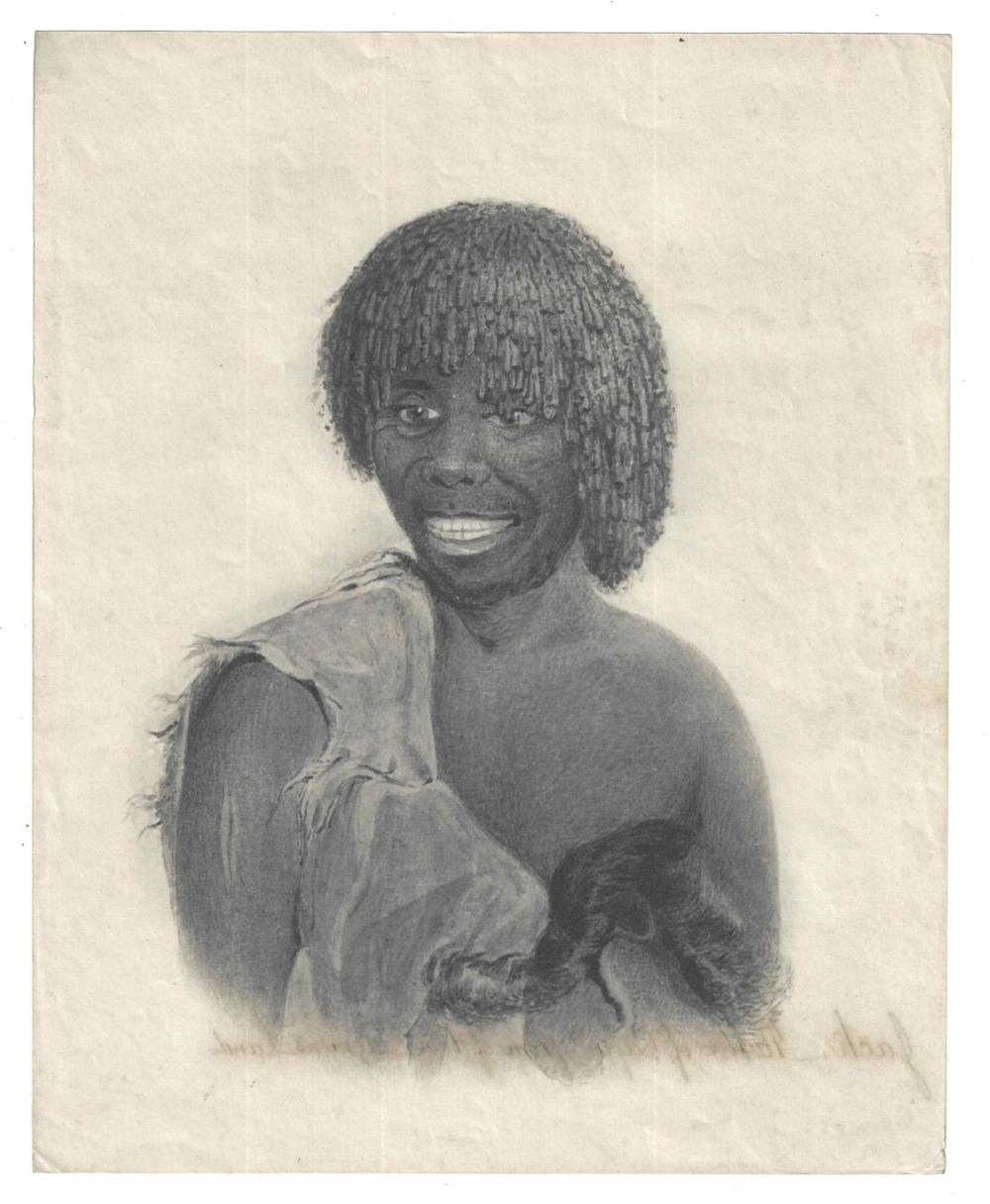Lot 108


Titled "Jack. - Native of Cape Grim of Van Diemen's Land." in gall ink on reverse
-
Dimensions:
- 28 x 22.2 cm Exhibited:
- 919 Literature:
- Decorative Art Medium:
- Ethnographic & Indigenous Artifacts Circa:
- Australiana Notes:
- This is one of a series of ten 19th Century photographs in our Sale of the last full-blooded Tasmanian Aborigines which are believed to be in a unique format. The original photographer of the images has yet to be determined despite both the Mitchell Library in Sydney and the Australian National Library attributing the photographs to John Watt Beattie (1859 -1930) who published a version of the photographs in his c.1890 book Aborigines of Tasmania. The National Library describes Beatties work as a compilation of "photographs of drawings by Thomas Bock, and 17 portraits taken from life in 1866'. All are embossed: J.W. Beattie, photographer, Hobart. However, Beattie is unlikely to have been the original photographer of Bocks images for a few reasons: Firstly, Beattie did not acknowledge any of the original photographers whose work he had appropriated for his book which includes the famous image of the last full-blooded male Tasmanian Aboriginal, William Lanne by Charles Alfred Woolley (1834 - 1922). Beattie appears to have been awarded authorship of the photographs solely because he was the first to publish these previously unknown images of Bocks work. However, the sepia photographs in our Sale which are printed on matt paper measuring 28 x 22.2 cm are starkly different from the Bock images in Beatties book which are appreciably larger i.e., 44.8 x 42.2 cm and are printed on glossy paper with much less details due to their overexposure. It becomes obvious that Beatties photographs are a later generation i.e., photos of photos and it raises the question as to why he would use lesser quality images in his publication if he were the creator and had access to the original glass negatives. Beattie obviously wanted his studio stamp to appear on all the photos included in his book but if he controlled the glass negatives around 1890 then surely have used them instead of having to resort to rephotographing existing images. Secondly, in describing the Bock images as photographs of drawings the National Library took its lead from Beattie who in his hand-written index of Aborigines of Australia, described them as sketches taken from life and "in possession of the Royal Society of Tasmania." But if Beattie had photographed the source images firsthand, he would have known that they were not in fact of drawings or sketches by the convict artist Thomas Bock but were part of a set of watercolours that the artist had sold to the Baptist Minister Henry Dowling (1780-1869). That Beattie knew of the Dowling images but was unaware of the media used to produce them should certainly rule him out as the original photographer. In the early 1830s Thomas Bock received a commission from George Robinson the protector of Aborigines to paint a rolling set of portraits of the last remaining full-blood Tasmanian natives before they were shipped off to Flinders Island ostensibly for their own survival. Bock, looking for more reward for his artistry, produced at least two other sets of the watercolours, one being for Lady Fitzroy, the Governors wife, and another for the influential Baptist Minister the Reverend Henry Dowling (1780-1869) whose set was acquired by the Royal Society sometime after his death. Each set was hand-painted years apart and so the watercolours are unique in their fine detail, and it is the Dowling watercolours that are an exact match to the sepia photographs. So, it raises the question of when were the original photographs taken and by whom? An examination of the sepia images conducted at the Mitchell Library in Sydney revealed the watermark of Steinbach on at least two of the photographs. This Belgian Company was a paper manufacturer from the late 1700s but only began producing photographic paper from 1885. There is also a pencil notation on the back of one image reading R.16 Sep.1/90 which would suggest that the sepia prints were produced in the period 1885 to 1890, although the original glass negatives are likely to predate this timeframe.There seems little doubt that Beattie had access to a set of the sepia images around 1890 that he rephotographed for his book, and so it cannot be ruled out that he may have also been responsible for producing the photographs if he was in possession of the glass negatives from the original photographer. If so, the negatives appear to have been used sparingly as to date no similar images are known to have surfaced in this particular format which would have been unusual for the commercially minded Beattie. During the 1890s Beattie, through his photographic studio in Hobart, marketed the work of two photographers who were active from the 1850s and both must be strong contenders as being the originator of the images. The first photographer was the first Anglican Bishop of Tasmania Francis Russell Nixon (1803-1879) who had enthusiastically taken up the new art of photography. Beattie was in possession of Nixons glass negatives and from the 1890s he printed large quantities of his photographs for sale. So, were the plates that produced the sepia photographs part of this hoard which is now believed lost? The second contender was the established photographer Charles Alfred Woolley (1834-1922) whose photographs of full-blood Aborigines taken in the 1860s were also marketed by Beattie from his studio in the 1890s. A number of Wooleys well-known photos appear unattributed alongside the sepia images in Beatties Aborigines of Tasmania as do those of Bishop Nixon. So, did Beattie also control Woolleys negatives at this time, or did he resort to rephotographing existing photo stock? But how would Nixon or Woolley have had access to the Reverend Dowlings watercolours to photograph? Bishop Nixon arrived in Tasmania in 1843 to take up his post as its first Anglican Bishop and while establishing his credentials he would likely have attended ecumenical meetings where he could have crossed paths with the influential Baptist the Reverend Henry Dowling. As a budding photographer he would have found Dowlings watercolours a desirable subject and could have asked to photograph the paintings. Charles Woolley has an even more direct connection to the Reverend Dowling having photographed him in his studio in Hobart sometime between 1860 and 1869. Interestingly, Woolley, also photographed Bishop Nixon and a copy of the photo resides in the University of Tasmania Library Special and Rare Materials Collection. This demonstrates a loose connection between the three men with Woolley at the centre. So, was it Woolley who took the images in the 1860s when he was in direct personal contact with Dowling or later after 1885 when the watercolours were in the possession of the Royal Society? But if Wooley was the original photographer, then why did it take until after 1885 for the glass negatives to be used to make copies unless they were resurrected by Beattie? Another intriguing aspect of this puzzle is why the ten images in our Sale were found in London in the early 2000s. But again, there appears to be a credible explanation. Beattie was in correspondence with the author H. Ling Roth who in 1890 published his aptly named scholarly work Aborigines of Tasmania This soon came to be viewed as the authoritative work on Tasmanian Aborigines even though Roth had never actually set foot in Tasmania. Roth relied on the torrent of detailed information provided to him by Beattie who could also have forwarded Roth the set of sepia images to be included in his book. The sepia images in our Sale have titles penned on the back in gall ink that largely coincide with the numbered titles of Beatties photographs in the hand-written index of Aborigines of Australia, although images 5 and 12 are reversed on our images. Were they Beatties control copies taken from the original negative plates for which he had no further use? An expert comparison of the titles with Beatties handwriting could confirm this. If Beattie did send the images to Roth, they were not used in his book directly. Perhaps he thought it would prove too costly an exercise with an initial print run of just 150 copies, but he did include three sketches of Bocks Aborigines executed by his daughter of which two are rough copies of the sepia images in our sale. Where else would Roth have had access to the largely unknown images of Bocks watercolours if they were not sourced from Beattie? Although it may prove impossible to fully establish the authorship of the sepia photographs, they remain without doubt top-tier museum standard examples of Australiana that captured the forlorn destiny afforded Tasmanias last full-blood Aborigines. The Sale also includes some rare First Edition books, modern Australian coins issues and a selection of fine jewellery to whet your appetite.
Accepted Forms of Payment:
American Express, MasterCard, Money Order / Cashiers Check, Other, Paypal, Visa, Wire Transfer
Shipping
AUSTRALIA: Purchases within Australia will be charged a MINIMUM SHIPPING FEE of $5.50 and will be sent by Registered Post. Additional insurance is optional at the buyer's expense.
INTERNATIONAL: Overseas purchases will be charged a MINIMUM SHIPPING FEE of $20.00 and will be sent by Registered Post International. Additional insurance is optional at the buyer's expense.
Both Australian and International packages are traceable in transit and require a signature on delivery.
Smalls Auctions
You agree to pay a buyer's premium of up to 20% and any applicable taxes and shipping.
View full terms and conditions
| From: | To: | Increments: |
|---|---|---|
| A$0 | A$249 | A$5 |
| A$250 | A$999 | A$10 |
| A$1,000 | A$4,999 | A$25 |
| A$5,000 | A$9,999 | A$50 |
| A$10,000 + | A$100 |





